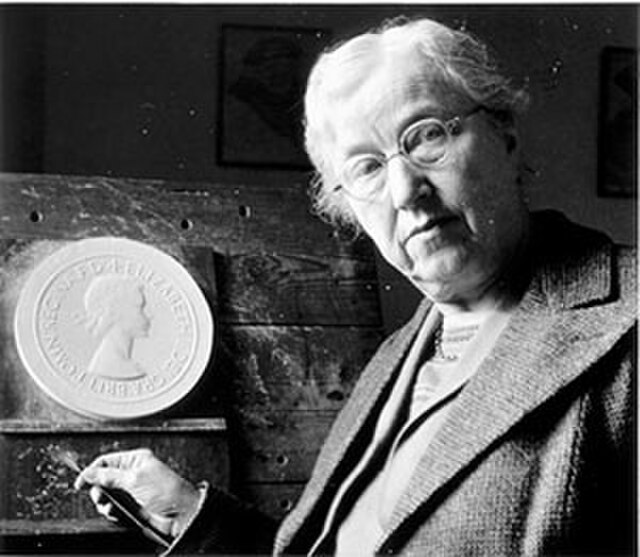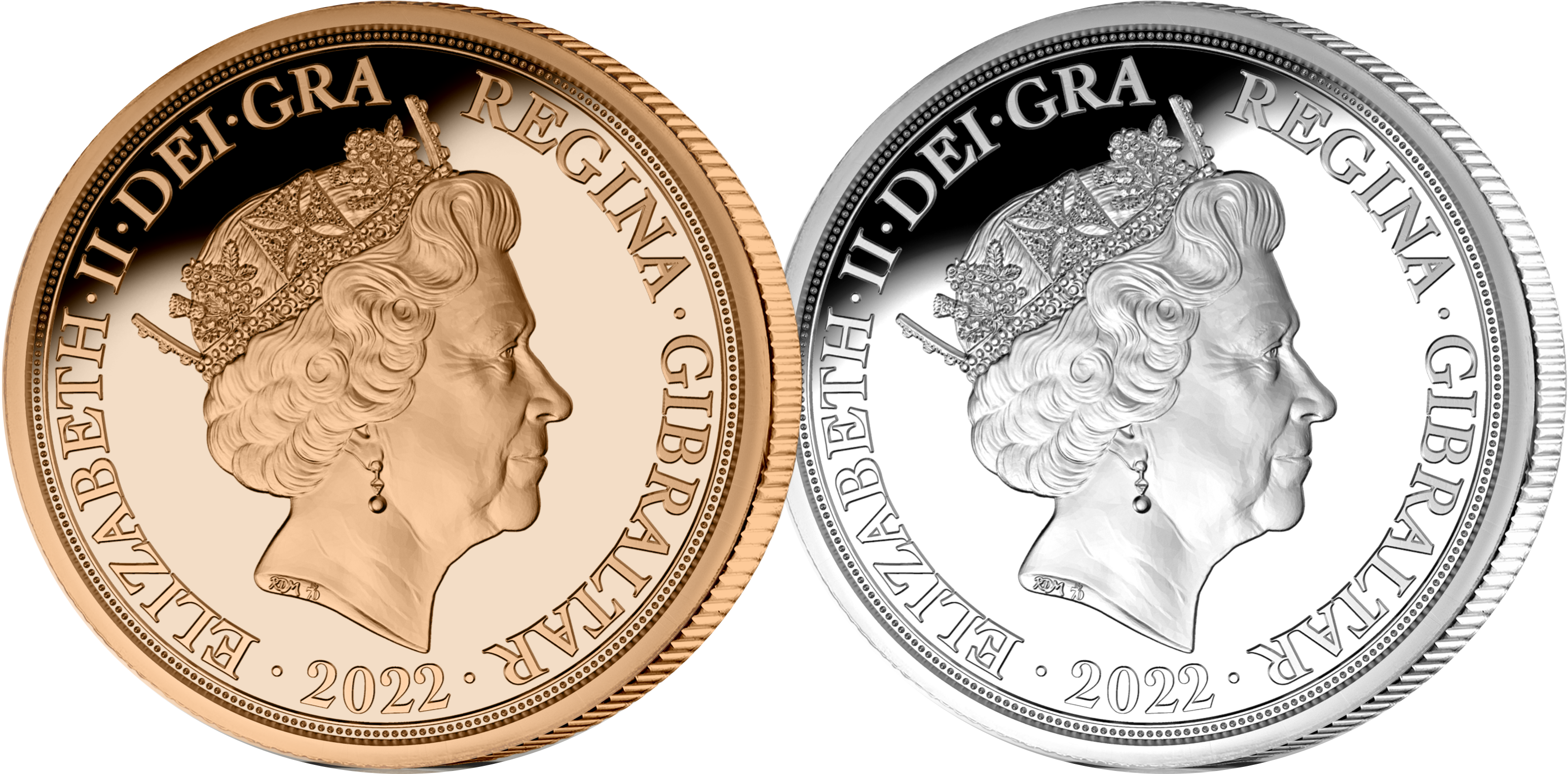
Coin Portraits Fit for a Queen
Queen Elizabeth II appeared on more coins than any other person in history, a record that is unlikely to be broken in the foreseeable future. She appeared on the coinage of at least 35 different countries and, literally, billions of circulating and commemorative coins displayed her portrait during her seventy-year reign. In that time, five distinctive portraits of the Queen appeared on coins circulating in the United Kingdom.

Mary Gillick (1881-1965) was 71 years old when she beat sixteen other artists in a competition to design the first portrait of the new Queen to appear on UK circulating coins. An acclaimed artist and sculptor, Gillick held her first exhibition at the Royal Academy in 1911, and had already enjoyed a distinguished career designing medals, memorials and portraits. Inspired by the first coinage portrait of Queen Victoria, she depicted the youthful Queen with a laurel wreath in her hair, which is tied with a ribbon. It is said that she refined her design at least sixty-three times over eight months until she was happy with it. The portrait first appeared on circulating coins in 1953 and would be the last to appear on British predecimal coinage. The artist’s initials are found at the bottom of the portrait, on the edge line.
Gillick’s portrait was well received and also appeared on the coinage of many Commonwealth countries. It continued to appear throughout the Queen’s reign on the four small silver Maundy coins that she presented to selected members of the public each year. Maundy coins are struck in very small quantities as the number of male and female recipients always matches the monarch’s age in that year. Thanks to the Maundy coins, Mary Gillick’s elegant design has become the longest-serving royal coin portrait of all time.
To prepare the country for the decimalisation of its currency in 1971, the new 5p and 10p coins were introduced in 1968 to replace the shillings and the florins as they had the same size and value. To help the public distinguish between old money and decimal currency, a new portrait of the Queen was introduced from 1968 onwards. Designed by Arnold Machin (1911-1999), it depicted the Queen wearing a pearl tiara (instead of a laurel wreath), which had been a wedding present from her grandmother, Queen Mary.
Machin also designed the portrait of the Queen that appeared on UK postage stamps between 1967 and 2022. It is believed to be the most reproduced work of art in history with about 320 billion copies produced.
Between 1985 and 1998, UK coins bore a portrait of the Queen by the acclaimed sculptor Raphael Maklouf. He depicted her wearing the Diamond Diadem, originally made in 1820 for the coronation of King George IV. Unlike the Gillick and Machin portraits, Maklouf’s is couped (cut off) at the neck and also includes a necklace and earring.
Many of the countries in the Commonwealth also decided to use the Maklouf portrait on their currency. The public welcomed the new design, although some critics did remark that Maklouf had depicted the fifty-eight-year-old Queen as looking ‘flatteringly young.’ The artist responded robustly, declaring that his critics had misunderstood his intention, which was to “create a symbol, regal and ageless.” Maklouf's initials (RDM) appear on the truncation of the neck. He decided to add the initial from his middle name (David) so that his portrait would not be mistaken for the work of other coin artists.

After running a competition to design the obverse of the 1997 commemorative Golden Wedding Crown, the Mint was so impressed with the quality of submissions that it commissioned a new portrait for circulating coins, too. The winning design was submitted by Ian Rank-Broadley who produced a realistic portrait of the 70-year-old monarch wearing the pearl tiara that appears in her second coin portrait.
Art critics responded favourably, with one even going so far as to declare that it was the first time in nearly 500 years that an artist had “truly captured their subject naturalistically … honestly, without any artistic embellishments … made more impressive and authoritative on account of their blunt realism.” The new portrait did experience some criticism from the public for this “blunt realism,” with some expressing shock that the Queen had approved the design.
Rank-Broadley explained that there was “no need to disguise the maturity of the Queen’s years. There is no need to flatter her. She is a 70-year-old woman with poise and bearing."
In 2015, Jody Clark became the next acclaimed artist to design a royal coin portrait for circulating coins since the reign of King Edward VII. Aged 33 when his design was selected, he was also the youngest artist to have done so. His depiction of Queen Elizabeth II had her wearing an enigmatic smile and the Diamond Diadem and pearl earring seen in her third coin portrait. His initials can be seen under the crouped neck.
As a sign of the changing times, Clark’s portrait was created digitally on a computer, rather than using the traditional sculpting media of clay or plaster. Speaking at the time when his winning design was unveiled to the public, he said, "I really liked the four previous coin portraits - each one is strong in its own way. I hope that I've done Her Majesty justice and captured her as I intended, in a fitting representation.” The new design was well-received by the public, with one newspaper reporting humorously that it was “on the money.”
The last coin portrait of Queen Elizabeth II issued during her lifetime was struck in London on 6th February 2022, seventy years to the day that she became our monarch. The sculptor of the special Platinum Jubilee coin portrait was Raphael Maklouf who had designed the Queen’s official third portrait back in 1985. This one-year-only commemorative coin, exclusive to The London Mint Office, marked a fitting way to celebrate an unprecedented milestone in British history that no other British monarch had ever reached. Sadly, it was also to mark the end of her long and distinguished reign as the Queen passed away on 8th September 2022 at the age of ninety-six.



